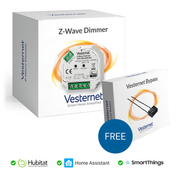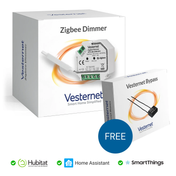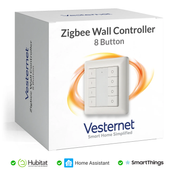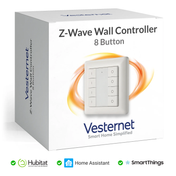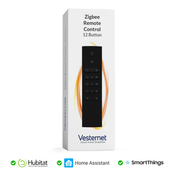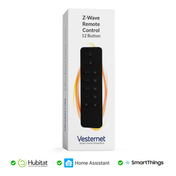IMPORTANT - Read this first!
Note: To simplify these diagrams, we have not shown the earth cables - but all circuits MUST have the earth cable correctly installed.
To protect the module a suitable rated overcurrent protection fuse must be installed on the Live input.
Installing the Fibaro modules involve working with 230V mains wiring. If you are not comfortable doing this you should consult a qualified electrician.
This application note is provided as a guide, all work is carried out at your own risk. Vesternet do not accept any responsibility or liability.
We work hard to keep these wiring guides accurate and up to date and would appreciate any feedback, corrections or suggestions that you may have. Please contact us using our help page or by simply emailing feedback@vesternet.com
This guide shows how to control Somfy Sonesse 24V blind motors via Z-Wave using a Fibaro Relay Insert 2 * 1.5 KW module.
Somfy have a wide range of blind motors available depending on whether you would like 230V AC (mains) or 24V DC power supplies.
This guide focuses on the Sonesse 30DCT (24V) motors.
We also have guides for other Somfy systems:
Somfy Sonesse 30DCT (24V) Blind Motor
The Somfy Sonesse 30DCT is a 24V DC motor capable of operating roller blinds.
 Figure 1: Somfy Sonesse 30DCT Motor Wiring
Figure 1: Somfy Sonesse 30DCT Motor Wiring
The standard wiring for the Sonesse 30DCT is shown in Figure 1.
The 30DCT has two plug connectors
- 2-Pin (Power) - these cables are connected to the 24V power supply
- 3-Pin (Control) - these cables are taken to the wall switch that allows you to control the motor (Up and Down)
The wall switch consists of two momentary switches (Up and Down). By pressing and releasing the 'Up' or 'Down' buttons the motor will wind the blind in that direction until it reaches its 'End -Stop', at which point the motor will stop. The Sonesse 30DCT has mechanical 'End-Stops' that are adjusted to set the blind's fully open and fully closed positions.
Installing the Fibaro Relay
The Fibaro Fibaro Relay Insert 2 * 1.5 KW module is a dual-channel relay capable of controlling two 24V loads. In this application it duplicates the functions of the wall switch by behaving like two momentary switches.
 Figure 2: Somfy Sonesse 30DCT Motor Wiring with Fibaro Relay (FGS-222)
Figure 2: Somfy Sonesse 30DCT Motor Wiring with Fibaro Relay (FGS-222)
Fibaro Relay Insert 2 * 1.5 Kw Connections
The Fibaro Relay Insert 2 * 1.5 Kw has seven terminals to connect it to the electrical wiring:
|
|
Fibaro Relay Insert 2 * 1.5 Kw Parameter Setting:The following parameters may need to be set:
|
Once you have the Fibaro Relay Insert 2 * 1.5 KW wired into the circuit and included into the Z-Wave system, you need to change two of the relays configuration parameters so that it works correctly in this application.
External Momentary Switches
The Fibaro Relay Insert 2 * 1.5 KW is configured by default to work with external toggle switches, so you need to change parameter 14 accordingly to enable it to work with the wall switch being used.
Relay to act as a Momentary Switch
When turned On via Z-Wave the relay would stay On until told to turn Off. In this scenario we need it to behave like a momentary switch, so that it turns off after a short period of around 1 second.
The relay includes an automatic off delay timer for each channel, these delays are controlled by Parameter's 4 and 5.
Fibaro Relay Insert 2 * 1.5 KW Parameter Settings:
The following parameters need to be set:
- 4 - 10 - turns channel 1 off after 1sec (setting is in 0.1s increments)
- 5 - 10 - turns channel 2 off after 1sec (setting is in 0.1s increments)
You will now have Z-Wave control of the Somfy 30DCT motor..
Related Information
- KB-52 - Where to buy blinds
- APNT-73: Somfy Sonesse 40WT (230V)
- APNT-75: Somfy IRS 300 (24V)
- APNT-79: Somfy RTS (wireless)
- APNT-80: Control blinds in VERA based on Environmental conditions
- APNT-81: Control blinds in Fibaro based on Environmental conditions
- APNT-50: Adding Devices in Fibaro Home Center
- APNT-48: Adding Devices to VERA
- APNT-30: Controlling Blinds and Motorised systems with Fibaro


